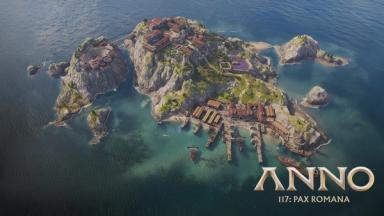How to maximise FPS in Monster Hunter Wilds


If you're dealing with lag, stuttering, or low FPS in Monster Hunter Wilds, you're definitely not alone. Lots of players face these issues, but the good news is, there are ways to improve performance and boost your FPS.
Let’s walk through some simple steps to help you get a smoother gameplay experience.
All possible ways to maximise FPS in Monster Hunter Wilds
In-game graphics settings
 Image via Capcom
Image via CapcomThe first thing you can try is adjusting the game’s graphics settings. This doesn’t mean lowering everything to the lowest possible settings, but rather tweaking certain options so that your system can handle the game better while still looking good.
- Upscaling (AMD FSR 3 and NVIDIA DLSS): If you’re using an AMD graphics card, turn on AMD FSR 3 (FidelityFX Super Resolution). For NVIDIA users, enable DLSS (Deep Learning Super Sampling). Both of these features help your system render the game at a lower resolution, then upscale it to look sharp on your screen.
- Ray Tracing: Ray Tracing is awesome for realistic lighting and reflections, but it’s also very demanding on your system. If your FPS is dropping and you need a boost, turn off Ray Tracing.
- NVIDIA Reflex Low Latency: If you're using an NVIDIA graphics card, turning on NVIDIA Reflex Low Latency (and selecting Enable + Boost) helps reduce input lag.
- Mesh Quality: This setting controls the quality of 3D objects in the game. For better performance, lower the mesh quality to Low or Medium.
- Texture Filtering: This setting is about how detailed textures look in the game. Set it to Medium (ANISO x4).
- Grass and Fur Quality: Grass and fur can look really nice, but they also use up a lot of resources. Set these to Low for a performance boost.
- Frame Generation: Frame generation helps make your game run more smoothly by creating additional frames.
Also Read: All possible fixes of Monster Hunter Wilds crashing on PlayStation 5
Use mods
Mods can provide a nice little performance boost and help your system run the game better. Here are some of the mods:
REFramework Mod
 Image via Nexus Mods
Image via Nexus ModsThis mod adds a scripting API to games that use the RE Engine (like Monster Hunter Wilds). It improves performance and also gives you some extra features like ReShade for better visuals and an FOV slider to adjust the field of view.
To install it, you’ll need to download it from Nexus Mods, then extract a file called dinput8.dll into your game’s root folder.
DLSSG-to-FSR3 Mod (for older NVIDIA RTX cards)
 Image via Nexus Mods
Image via Nexus ModsIf you're using an older RTX 30 Series GPU, you don’t have access to NVIDIA’s Frame Generation. But with this mod, you can switch the frame generation over to FSR3, which works better with older GPUs.
Just download the mod, place the files in your game’s root folder, and you’ll be able to use DLSS upscaling and Frame Generation for better performance.
Update your graphics drivers
 Image via Nvidia
Image via NvidiaBefore making any changes, always check that your graphics drivers are up to date. Here’s how to check:
- For NVIDIA users: Open the NVIDIA GeForce Experience app, go to the Drivers tab, and click on Download if there’s an update available.
- For AMD users: Open AMD Software Adrenaline Edition, and click Install if an update is available.
Fix camera stutter with DirectStorage
 Image via Microsoft
Image via MicrosoftDirectStorage helps games load faster and smoother, but you can upgrade to the latest version to fix camera stutter.
To install the latest version of DirectStorage:
- Download the DirectStorage SDK from Microsoft.
- Rename the file extension from .nupkg to .zip and extract it.
- Inside the folder, find the x64 folder and copy dstorage.dll and dstoragecore.dll into your game’s root folder. This should help smooth out any stuttering when you move the camera around.
Lossless Scaling
 Image via Steam
Image via SteamIf you’ve tried everything and your FPS is still struggling, Lossless Scaling might be your next best option.
It’s a paid app on Steam ($6.99), but it can give your system an extra boost, especially if it’s having trouble with the game’s native frame generation.
Once you install it:
- Turn off in-game frame generation.
- In Lossless Scaling, select FSR scaling and adjust Frame Generation to LSFG 2.3 (if you have a 144Hz monitor) or lock the FPS to 30 and set scaling to X2 for a 60Hz monitor.
- When you launch the game, hit Scale in the app for better performance.
Monitor settings
 Screenshot by BLAST
Screenshot by BLASTIf you have a 144Hz monitor, make sure it's actually running at 144Hz to get the best performance.
To check this in Windows:
- Go to Advanced Display Settings.
- Check your monitor’s refresh rate. If it’s not set to the highest possible setting, adjust it so that you’re getting the full potential out of your monitor.
Also Read: Monster Hunter Wilds Optimized Settings
FAQ
Q1: Will turning off Ray Tracing hurt the game’s visuals?
- Ray Tracing looks amazing, but it’s also hard on your system. Turning it off won’t ruin the game’s overall visuals, and it will definitely give your FPS a boost, especially if your system is older.
Q3: Can I use mods like REFramework with other games?
- Yes! The REFramework Mod works with other games that use the RE Engine, like Dragon’s Dogma 2 and Resident Evil 7.
Q3: Is it worth using Lossless Scaling?
- If you’ve tried everything else and still need better performance, Lossless Scaling is definitely worth considering. It can really help if your system is struggling with the game’s native frame generation, though it is a paid app, so it’s worth trying the other free options first.





